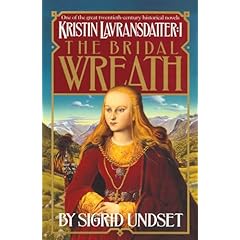Born on May 31st:
 Walt Whitman, b. 1819, poet. I’m not a great Whitman fan, but he did write some things that I can appreciate. There’s a Messner biography of Whitman that I don’t have but I would like to read it and maybe own it: Walt Whitman: Builder for America by Babette Deutsch. Messner, 1941. Perhaps the biography would give me a better appreciation for his poetry.
Walt Whitman, b. 1819, poet. I’m not a great Whitman fan, but he did write some things that I can appreciate. There’s a Messner biography of Whitman that I don’t have but I would like to read it and maybe own it: Walt Whitman: Builder for America by Babette Deutsch. Messner, 1941. Perhaps the biography would give me a better appreciation for his poetry.
Robert Louis Stevenson on Walt Whitman: “A large shaggy dog just unchained scouring the beaches of the world and baying at the moon.”
Walt Whitman on Walt Whitman: “Do I contradict myself? Very well, then I contradict myself, I am large, I contain multitudes.”
Nan Terrell Reed, b. 1886, poet and songwriter. At some point in her career, she decided to attempt to write a poem every day. Her poems, at least the ones I sampled, are not terribly memorable or literary, but writing a poem a day seems as if it might be worth the effort, if only for one’s own satisfaction and enjoyment.
 It’s only a little tumble-down house
It’s only a little tumble-down house
That’s sadly in need of repair—
With a rickety fence and a yard unkept—
Yet the Spirit of God dwells there.
It’s there you may learn the portion of joy
That lies in an everyday thing
From a woman with hair as white as the frost
And a heart as young as the Spring.
Yes—only a little tumble-down house
That’s sadly in need of repair—
The home of a mother with toil-worn hands
Yet the Spirit of God dwells there.
Elizabeth Coatsworth, b. 1893, author of the Newbery Medal book, The Cat Who Went to Heaven. She also wrote a series of five books about Sally, a girl who lived in New England in the late 1700’s/early 1800’s. And she wrote the book I just finished, Door to the North, about a Viking expedition to the Vinland, the Great Lakes area, and Hudson Bay. In addition to historical fiction and fiction set in other times and places, Elizabeth Coatsworth also wrote poetry.
 Swift things are beautiful:
Swift things are beautiful:
Swallows and deer,
And lightening that falls
Bright-veined and clear,
Rivers and meteors,
Wind in the wheat,
The strong-withered horse,
The runner’s sure feet.
And slow things are beautiful:
The closing of day,
The pause of the wave
That curves downward to spray,
The ember that crumbles,
The opening flower,
And the ox that moves on
In the quiet of power.
Madeleine Polland, b. 1918, Irish, also an author of historical fiction for children. I read and reviewed Mission to Cathay quite a few years ago. She also wrote Children of the Red King, Beorn the Proud (Vikings), Flame Over Tara (St. Patrick), and many others. I have those latter two, but I haven’t read them yet.





